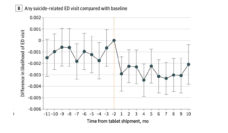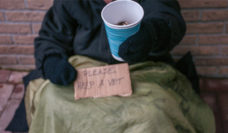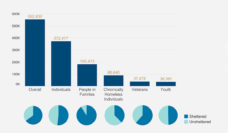Public Health Post: You have a background in urban planning. How did you transition into health, homelessness, and specifically veterans research?
Melissa Chinchilla: I didn’t always know what I wanted to be, but I knew I wanted to work on community issues and issues of social justice. In my undergraduate years, I interned with a couple community arts organizations, and I became interested less in the arts programs and more in the impact that arts opportunities had on people. This led me to conversations about gentrification and affordable housing and what displacement looks like. Urban planning has the potential for such huge impacts on what people experience in their day to day.
What kind of impacts?
Well, rent control became the default of affordable housing in Los Angeles. I began learning about the different experiences people were having under rent control. People may not know their rights, people living in sub-standard housing, people facing eviction. This is part of the intersection of affordable housing and health.
For example, I’ve worked as a part of a collaborative called Health Homes Collaborative, and we focused on the ways that sub-standard housing had negative impacts on people’s health outcomes through lead poisoning, peeling paint, and code violations, especially affecting children and their development. Affordable housing is a social justice issue, but we think about it like a moral obligation. When we bring in a public health perspective, it becomes so much stronger.
Could you expand on what you mean by the public health perspective making the argument stronger?
If you’re not healthy, you can’t pursue the same opportunities as everyone else. And if you don’t have access to X, Y, or Z that contributes to your physical or mental health, then that is unjust. When I was at the San Francisco Department of Public Health, I had the opportunity to work on a project focusing on social cohesion and mixed-income housing. Can mixed-income housing projects build community and better health? From there, I got interested in how we build community.
And how does building communities build better health?
When looking at building community from the health perspective, we see the mental health and social capital impacts. Loneliness is something to look at. Loneliness actually kills people. Urban planners are building communities not only with an eye on employment but also with attention to loneliness. We’re physically designing communities. We’re bringing communities together to discuss where they want things and what they want.
How do you use this framework with homelessness?
There’s a big focus on veterans who have severe mental illness and have experienced homelessness. There’s an emphasis in thinking about the needs of that population and how they can be supported through stabilized housing and connecting them to the right resources at the VA. There’s a lot of work done on the individual level and motivation. I’m more interested in the opportunity. So, maybe people are motivated but do they have opportunities to socialize with others? Are they living in a neighborhood where they feel safe to go out and walk and engage with someone else? Can people get to their medical appointments? That’s community integration: how people function day-to-day based on their environment. It’s a layer above the individual. This is really crucial in the way we think about a resilient city.
What does a resilient city mean?
A resilient city is a city that everyone has a right to live in. You can’t have cities that are only for the wealthy. Urban spaces are run on a mix of labor and you can’t have people who live two hours away can’t afford to live in the city they work in. Cities where the commuters are the workers is a city in crisis. Cities need to be for everyone, especially the people that work there.
Chinchilla participated in the Boston University School of Public Health Public Health Conversations series The Resilience of Cities: Where We Work, Live, and Play.














